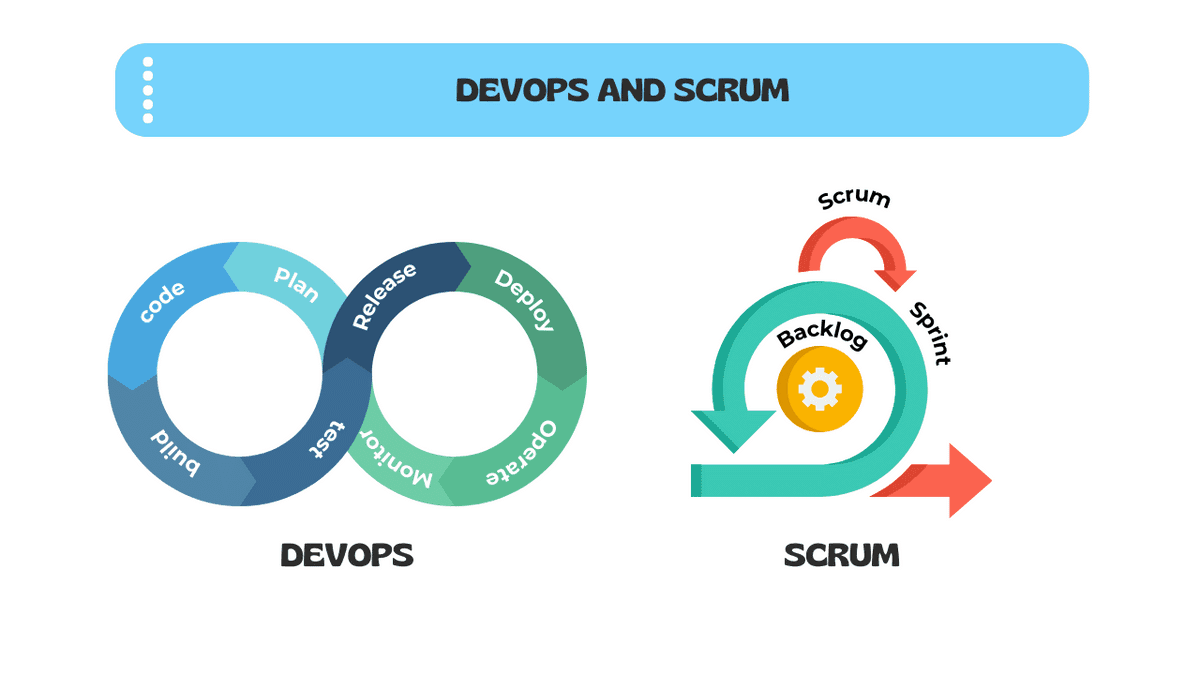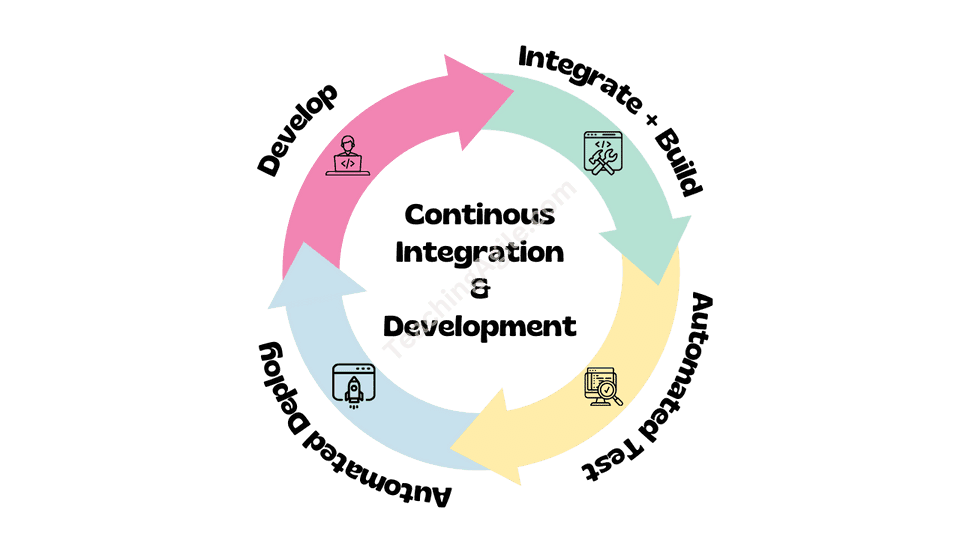
Continuous Integration - Boost your Scrum and Agile Development
 Continuous Integration - Boost your Scrum and Agile Development
Continuous Integration - Boost your Scrum and Agile Development
Scrum is a popular framework for agile project management, while Continuous Integration (CI) is a software development practice. When these two concepts are combined, they can help teams deliver high-quality software more efficiently.
The traditional approach is to release an incremental software at the end of Sprints, adopting CI/CD can offer the flexibility to release more frequently if it aligns with your project's needs and goals.
 Devops with Scrum
Devops with Scrum
💡
The key is to maintain the essence of Scrum while harnessing the power of CI/CD for faster, more reliable software delivery.
In this article, we will discuss what Continuous Integration is, why it's beneficial to Scrum Teams, and how to effectively implement it in your Scrum practice. Let's begin by understanding what Continuous Integration means.
What is Continuous Integration?
Continuous Integration (CI) is a software development practice that involves regularly merging code changes from multiple developers into a shared repository, usually several times a day.
This approach aims to reduce the risk of integration conflicts, improve code quality, and accelerate the development process.
💡
The idea is to keep making progress and testing those changes as early and often as possible.
 Understanding Continuous Integration
Understanding Continuous Integration
CI is often combined with automated build and testing processes, which helps ensure that the merged code remains stable and reliable, and any issues are identified and resolved quickly.
This practice is fundamentally about breaking down silos, reducing integration headaches, and fostering a culture of collaboration.
Benefits of Continuous Integration in Scrum
Implementing Continuous Integration within a Scrum Team offers several advantages:
-
Reduced Integration Conflicts: By integrating code changes frequently, the likelihood of integration conflicts is significantly reduced, leading to fewer issues and delays in the development process.
-
Faster Feedback: CI, when combined with automated testing, provides rapid feedback on code quality, allowing the Development Team to identify and address issues quickly.
-
Improved Code Quality: Regular integration, combined with automated testing, helps maintain high code quality, as issues are detected and resolved early in the development process.
-
Increased Collaboration: CI encourages collaboration within the Development Team, as members work together to ensure smooth and consistent integration of their code changes.
-
Enhanced Adaptability: Continuous Integration enables Scrum Teams to adapt more easily to changing requirements, as the codebase remains stable and flexible throughout the development process.
Implementing Continuous Integration in Scrum
To effectively implement Continuous Integration in your Scrum practice, follow these steps:
-
Use a Version Control System: Employ a version control system to manage and track code changes from multiple developers, such as Git or SVN.
-
Automate Build and Testing: Set up automated build and testing processes that run whenever code is merged into the shared repository. This ensures code quality and stability.
-
Merge Code Changes Frequently: Encourage developers to merge their code changes into the shared repository multiple times a day, reducing the risk of integration conflicts.
-
Monitor and Address Issues: Monitor the CI process and address any issues that arise promptly. This includes fixing broken builds, addressing test failures, and resolving integration conflicts.
-
Promote a Culture of Collaboration: Foster a culture of collaboration within the Development Team, emphasizing the importance of working together to ensure successful Continuous Integration.
The Interplay of CI/CD and Sprints
Now, let's address your concern about the synergy between CI/CD and Scrum Sprints.
In a CI/CD environment, code changes can be continuously integrated, tested, and even deployed as needed.
This, at first glance, might seem counterintuitive to the Sprint concept, which typically has a fixed duration.
The key to harmonizing these two approaches lies in recognizing that Sprints are not solely about releasing to production. They serve a multifaceted purpose:
-
Iterative Development Sprints facilitate focused work on high-priority features, allowing teams to iterate rapidly. This ensures that stakeholders receive frequent updates and can provide valuable feedback.
-
Quality Assurance Sprints provide a dedicated period for rigorous testing, bug fixing, and quality assurance. This ensures that each increment maintains a high level of quality.
-
Stakeholder Collaboration The Sprint Review, held at the end of each Sprint, encourages collaboration with stakeholders. While daily releases might overwhelm stakeholders, Sprints provide a structured forum for feedback and adjustment.
-
Alignment with Goals Sprints keep the team aligned with the overarching project goals. They help in prioritizing work and adjusting course as needed.
-
Empirical Feedback One of Scrum's core principles is empiricism. By working in Sprints, teams can gather data and feedback, enabling continuous improvement.
Cultivating a Culture of Continuous Integration
To truly master CI, it's vital to foster a culture of continuous integration within your organization. Here are some key suggestions to achieve this:
-
Integrate Frequently: Frequent integration leads to quicker problem identification and resolution. Teams should embrace the challenge and automate the process, resulting in faster learning cycles and reduced rework.
-
Visibility of Integration Results: Transparency is key. When integration fails, it should be visible to everyone, and when it's resolved, new tests should prevent the same problem from recurring.
-
Prioritize Fixing Failed Integrations: Teams must prioritize fixing integration failures. Visual indicators can help draw attention to broken builds, emphasizing the importance of rapid resolution.
-
Establish a Shared Cadence: Consistency in integration points across teams enhances accessibility. If complete integration within an iteration isn't possible, teams should make near-term trade-offs while continuously improving their techniques and infrastructure.
-
Develop and Maintain Proper Infrastructure: Effective CI depends on the availability of testing and staging environments. Invest in infrastructure to ensure velocity in the long run.
-
Apply Supportive Software Engineering Practices: CI is more accessible when systems are designed with it in mind. Test-first development, modular solutions, and separation of concerns are key principles to uphold.
Conclusion
In conclusion, Continuous Integration is a valuable practice for Scrum Teams, as it helps reduce integration conflicts, improve code quality, and accelerate the development process.
It mandates that developers frequently integrate their code into a central repository throughout the day.
This continuous integration not only fosters collaboration but also serves as a vigilant gatekeeper, detecting issues and conflicts swiftly by cross-referencing code changes made at different times.
This proactive approach helps maintain code quality and ensures that the software remains robust and error-free.
By effectively implementing Continuous Integration in your Scrum practice, you can enhance collaboration, adaptability, and overall success in delivering valuable product increments.